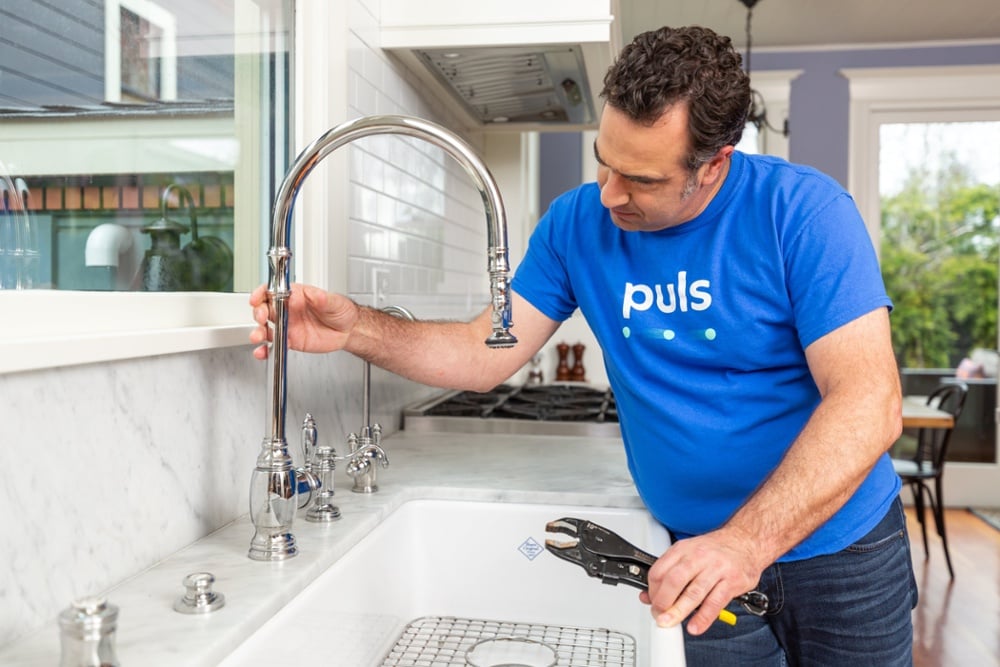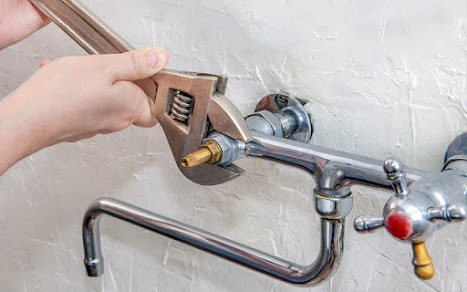Navigating Difficult Home Appliance Issues: How Plumbers Can Save the Day
Schedule ServiceAre you on the lookout for facts and techniques around Why Do My Pipes Make Noises?

To detect loud plumbing, it is essential to determine very first whether the unwanted audios happen on the system's inlet side-in other words, when water is transformed on-or on the drainpipe side. Noises on the inlet side have actually varied reasons: extreme water stress, worn valve and also tap parts, poorly linked pumps or various other appliances, improperly positioned pipe fasteners, and also plumbing runs including a lot of limited bends or various other limitations. Sounds on the drain side normally originate from poor area or, as with some inlet side noise, a format containing limited bends.
Hissing
Hissing sound that occurs when a tap is opened a little typically signals extreme water stress. Consult your local public utility if you believe this problem; it will certainly have the ability to tell you the water pressure in your location and also can install a pressurereducing valve on the inbound water supply pipe if needed.
Thudding
Thudding sound, frequently accompanied by trembling pipelines, when a tap or appliance valve is switched off is a problem called water hammer. The noise and resonance are brought on by the resounding wave of pressure in the water, which all of a sudden has no location to go. In some cases opening up a shutoff that discharges water rapidly right into an area of piping including a limitation, arm joint, or tee installation can produce the exact same problem.
Water hammer can generally be cured by setting up installations called air chambers or shock absorbers in the plumbing to which the trouble valves or faucets are attached. These tools allow the shock wave produced by the halted circulation of water to dissipate airborne they contain, which (unlike water) is compressible.
Older plumbing systems may have short vertical areas of capped pipeline behind wall surfaces on faucet runs for the exact same objective; these can at some point fill with water, decreasing or destroying their efficiency. The remedy is to drain pipes the water supply completely by shutting off the primary water system shutoff and also opening up all taps. Then open the main supply valve as well as shut the taps individually, beginning with the tap nearest the shutoff and also ending with the one farthest away.
Chattering or Shrilling
Extreme chattering or shrilling that takes place when a shutoff or tap is turned on, which generally goes away when the installation is opened fully, signals loose or defective internal parts. The solution is to replace the shutoff or tap with a brand-new one.
Pumps as well as home appliances such as cleaning makers as well as dishwashing machines can transfer motor noise to pipes if they are improperly connected. Link such things to plumbing with plastic or rubber hoses-never inflexible pipe-to isolate them.
Various Other Inlet Side Noises
Squeaking, squealing, damaging, breaking, and also touching normally are triggered by the growth or contraction of pipes, generally copper ones supplying warm water. The audios take place as the pipes slide against loosened bolts or strike close-by home framing. You can frequently pinpoint the area of the trouble if the pipelines are subjected; just adhere to the audio when the pipelines are making noise. Most likely you will certainly uncover a loosened pipe hanger or a location where pipelines lie so close to floor joists or other mounting items that they clatter against them. Attaching foam pipeline insulation around the pipes at the point of contact need to correct the issue. Make certain bands and also wall mounts are protected and give sufficient support. Where feasible, pipeline fasteners need to be connected to enormous structural components such as foundation walls as opposed to to framing; doing so lessens the transmission of vibrations from plumbing to surfaces that can intensify as well as transfer them. If affixing fasteners to framing is unavoidable, cover pipes with insulation or various other durable material where they call fasteners, and also sandwich the ends of brand-new bolts between rubber washing machines when mounting them.
Fixing plumbing runs that deal with flow-restricting tight or numerous bends is a last hope that ought to be taken on only after getting in touch with a proficient plumbing contractor. Sadly, this scenario is fairly usual in older houses that might not have been developed with interior plumbing or that have seen numerous remodels, especially by beginners.
Drainpipe Sound
On the drainpipe side of plumbing, the chief objectives are to eliminate surface areas that can be struck by dropping or rushing water and also to insulate pipes to have unavoidable noises.
In brand-new construction, tubs, shower stalls, commodes, and wallmounted sinks and also containers ought to be set on or versus resilient underlayments to decrease the transmission of audio through them. Water-saving bathrooms and also faucets are less loud than standard models; mount them as opposed to older types even if codes in your area still allow making use of older fixtures.
Drainpipes that do not run up and down to the cellar or that branch into horizontal pipeline runs sustained at floor joists or other mounting existing specifically problematic noise problems. Such pipelines are large enough to emit substantial vibration; they also bring substantial quantities of water, which makes the situation worse. In brand-new building and construction, define cast-iron dirt pipelines (the huge pipelines that drain pipes commodes) if you can manage them. Their enormity consists of a lot of the sound made by water going through them. Likewise, prevent routing drainpipes in walls shown to rooms and also areas where individuals collect. Wall surfaces consisting of drainpipes ought to be soundproofed as was described earlier, making use of dual panels of sound-insulating fiber board and also wallboard. Pipelines themselves can be wrapped with special fiberglass insulation made for the purpose; such pipes have a resistant plastic skin (often containing lead). Results are not constantly satisfactory.
3 Most Common Reasons for Noisy Water Pipes
Water hammer
When water is running and is then suddenly turned off, the rushing liquid has no place to go and slams against the shut-off valve. The loud, thudding sound that follows is known as a water hammer. Besides being alarming, water hammer can potentially damage joints and connections in the water pipe itself. There are two primary methods of addressing this issue.
Check your air chamber. An air chamber is essentially a vertical pipe located near your faucet, often in the wall cavity that holds the plumbing connected to your sink or tub. The chamber is filled with air that compresses and absorbs the shock of the fast moving water when it suddenly stops. Unfortunately, over time air chambers tend to fill with water and lose their effectiveness. To replenish the air chambers in your house you can do the following. Turn off the water supply to your house at the main supply (or street level). Open your faucets to drain all of the water from your plumbing system. Turn the water back on. The incoming water will flush the air out of the pipes but not out of the vertical air chamber, where the air supply has been restored. Copper pipes
Copper pipes tend to expand as hot water passes through and transfers some of its heat to them. (Copper is both malleable and ductile.) In tight quarters, copper hot-water lines can expand and then noisily rub against your home's hidden structural features — studs, joists, support brackets, etc. — as it contracts.
One possible solution to this problem is to slightly lower the temperature setting on your hot water heater. In all but the most extreme cases, expanding and contracting copper pipes will not spring a leak. Unless you’re remodeling, there's no reason to remove sheetrock and insert foam padding around your copper pipes.
Water pressure that’s too high
If your water pressure is too high, it can also cause noisy water pipes. Worse, high water pressure can damage water-supplied appliances, such as your washing machine and dishwasher.
Most modern homes are equipped with a pressure regulator that's mounted where the water supply enters the house. If your home lacks a regulator, consider having one professionally installed. Finally, remember that most plumbers recommend that water is delivered throughout your home at no lower than 40 and no greater than 80 psi (pounds per square inch).
Whatever the state of your plumbing, one thing is certain — you’re eventually going to encounter repair and replacement issues around your home that require professional help. That’s where American Home Shield can come to your aid.
https://www.ahs.com/home-matters/repair-maintenance/causes-of-noisy-water-pipes/

Do you like more info about How To Fix Noisy Pipes? Give feedback down below. We will be interested to find out your responses about this review. We hope that you visit us again later on. Liked our piece? Please share it. Help other people locate it. Thanks for your time invested reading it.
Click On This Link